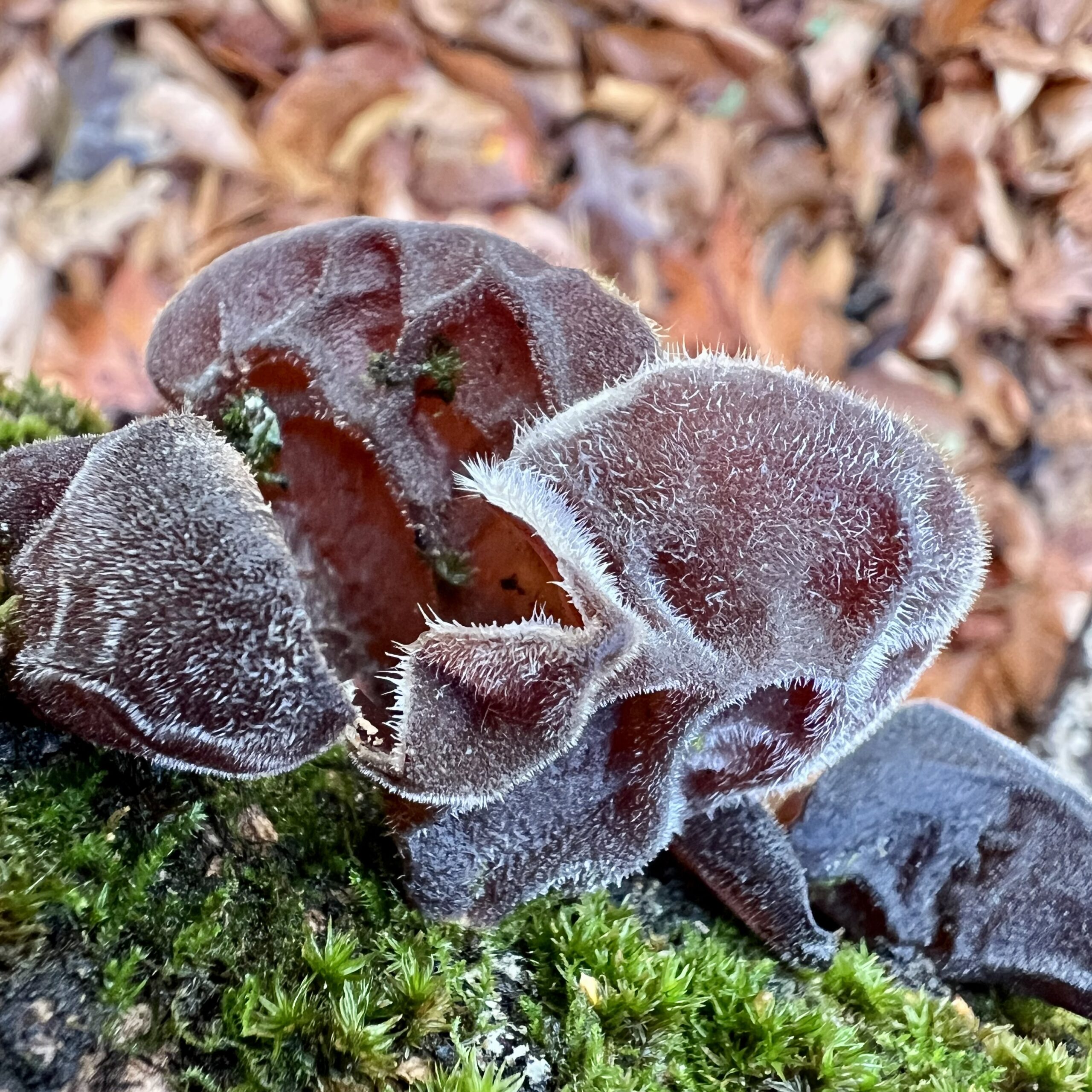PA Master Naturalist’s Notebook: Nov. 5 – 26, 2024

As the Program and Tour Coordinator at Tyler Arboretum, every week I look forward to preparing my weekly report for our volunteer educators.
I draw upon my training as a PA Master Naturalist to highlight the plants, insects, animals and other natural phenomena I’ve recently observed on Tyler’s grounds. I include photos (and some videos) along with educational tidbits our volunteers can share with our visitors.
My colleagues have encouraged me to compile my reports into an occasional blog for you. I’d love to hear from you about your observations too! Please email me anytime at tmallon@tylerarboretum.org.
Report: Week of Nov. 5, 2024
Another unseasonably warm, dry week at the Arboretum. Trees seemed to reach peak color last week and now the bursts of color are underfoot. If you leave the leaves in your garden, they will make a cozy home for overwintering insects.
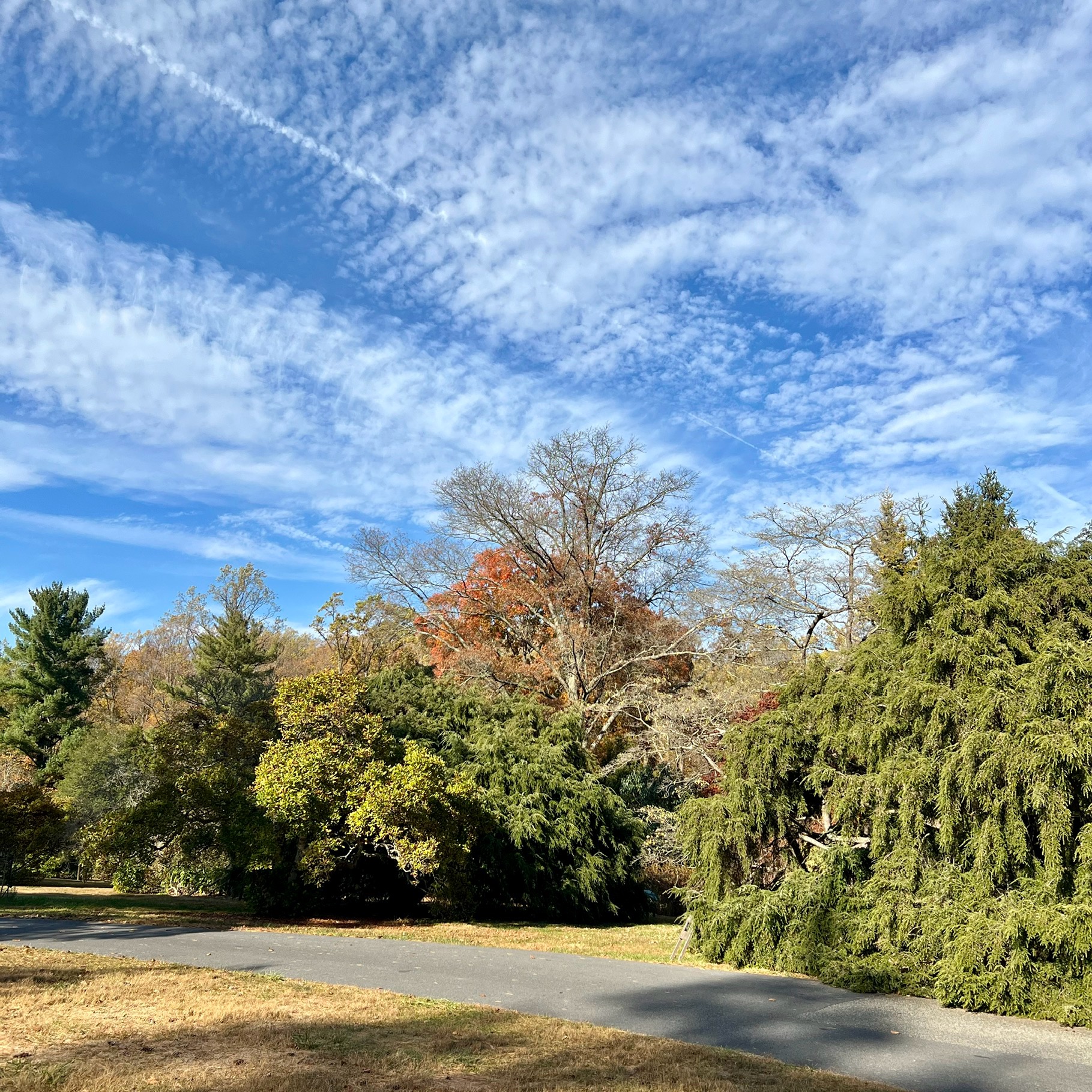
Autumn sky
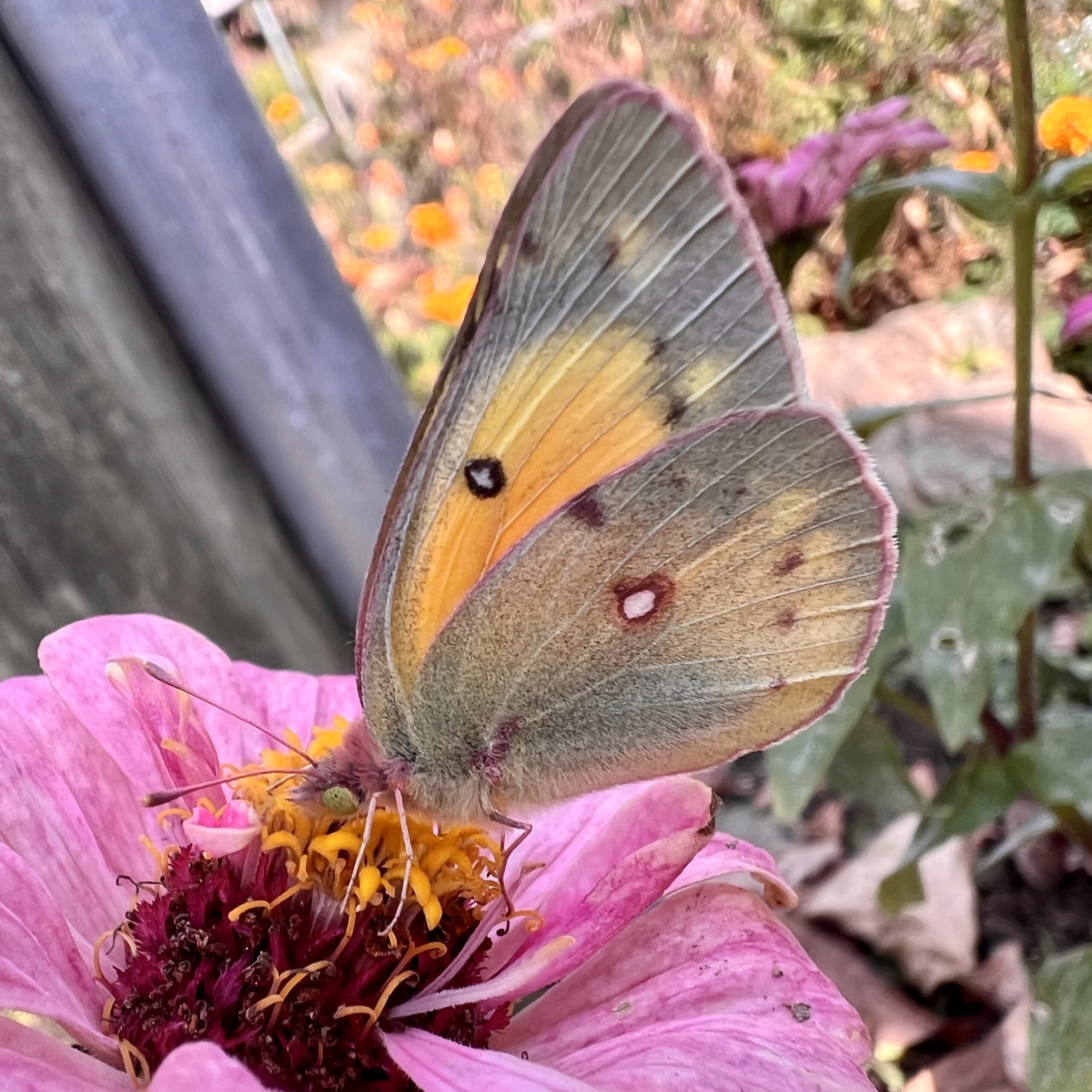
Orange sulphur (Colias eurytheme)
Sulphur butterflies have an erratic, fast-paced flight pattern, making them difficult to photograph. After an entire season, I finally managed to get close enough for a photo. The larvae of the orange sulphur butterfly feed on plants in the pea family. Remarkably, a single female orange sulphur can lay up to 1,000 eggs in her lifetime!
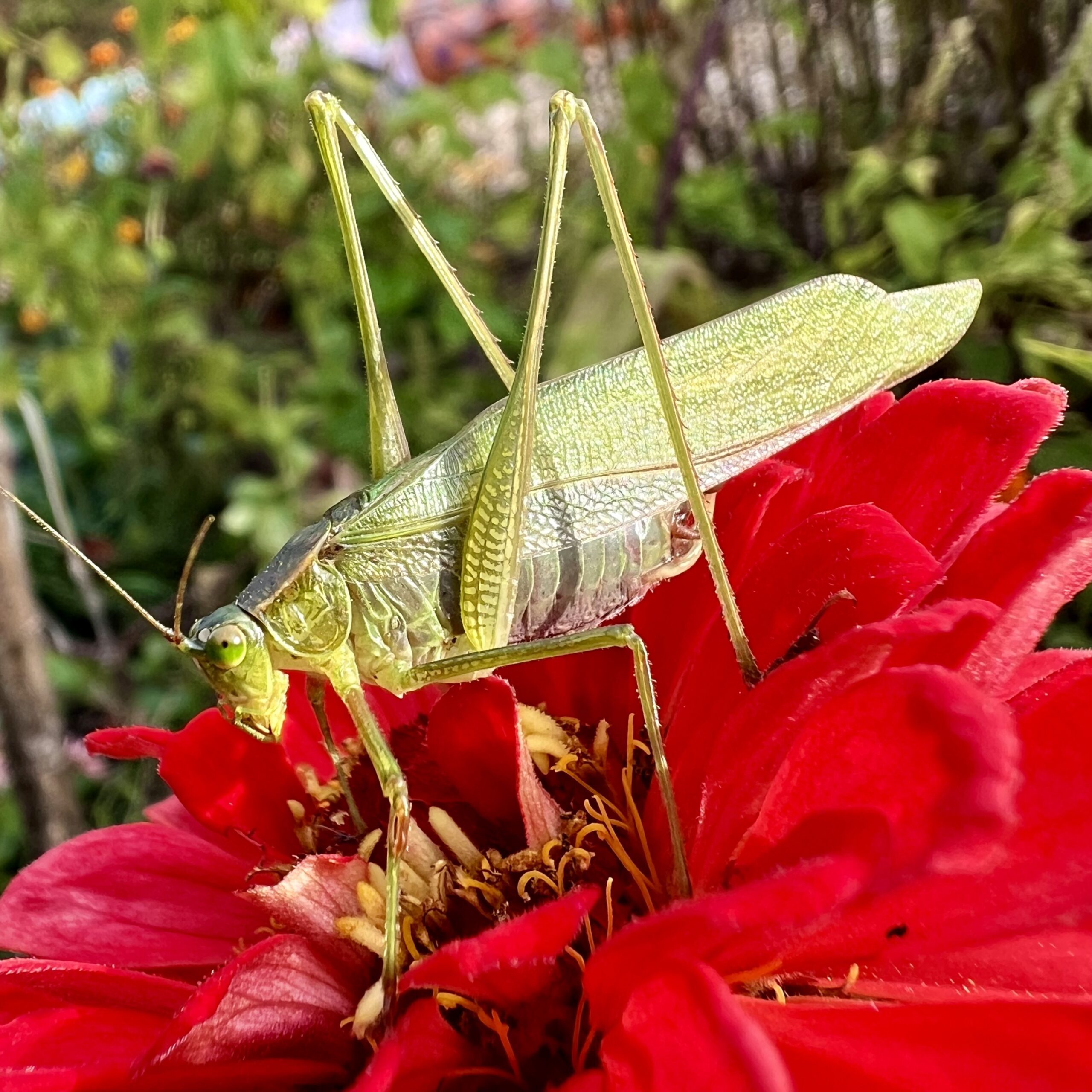
Bush katydid

Variegated Fritillary (Euptoieta claudia)
Variegated Fritillaries use a wide variety of host plants including purple passionflower, may apples, and common blue violets
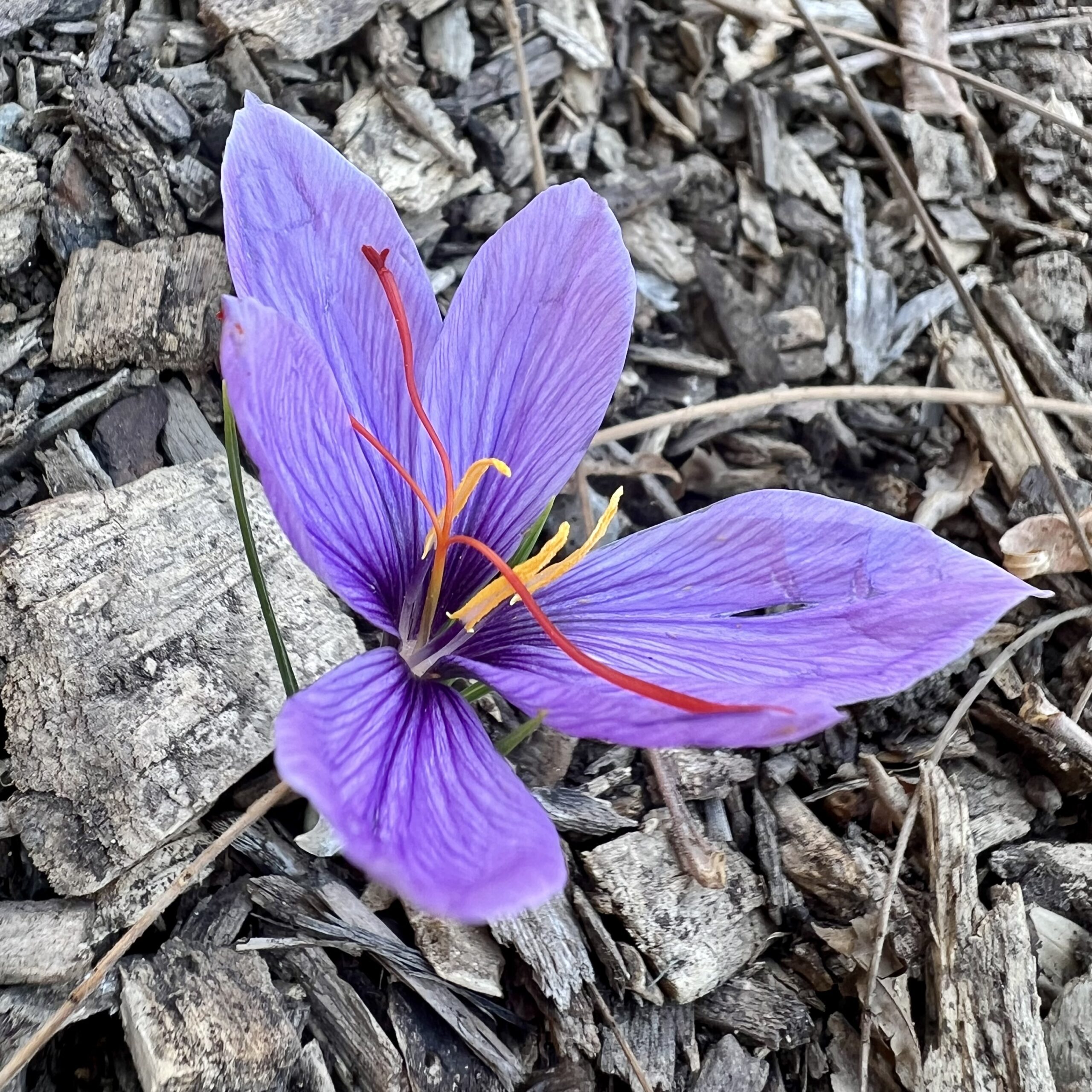
Saffron crocus
This Saffron crocus bloomed a shocking 10 days after it was planted in Lucille’s Garden, a full year earlier than expected! Read more about how to plant saffron crocus, garlic and other bulbs here.
Report: Week of Nov. 16, 2024
I’ve been enjoying the blue skies and cooler temperatures. I noticed the first frost this week. Winter is just around the corner!
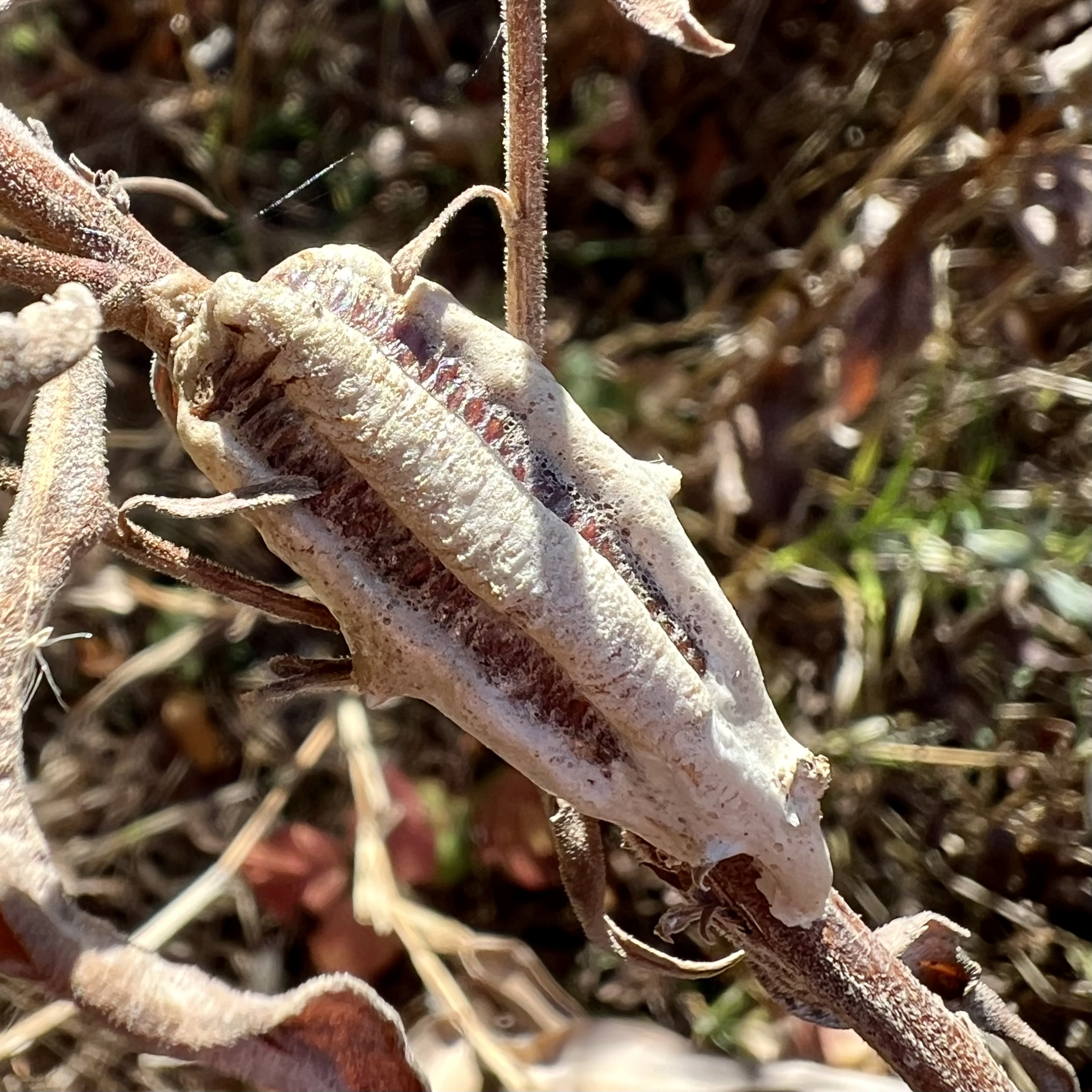
Ootheca of Narrow-winged Mantis (Tenodera angustipennis)
Several types of praying mantises can be found in our area, including the Asian, Narrow-winged, European, and Carolina mantises. The Carolina mantis (Stagmomantis carolina) is the only species native to this region. Unfortunately, non-native mantises prey on the native Carolina mantis and compete with it for food, contributing to its population decline.
Identifying each species is easier with a few tips:
- The Asian mantis is large, typically bright green (though brown individuals can occur), with a short thorax, a long body, and a distinctive yellow spot between its forelegs.
- The Narrow-winged mantis is slightly smaller and slimmer than the Asian mantis and features an orange spot between its forelegs.
- The European mantis is slightly smaller than the Asian mantis and can be recognized by a “bullseye mark” on the inside of each front leg.
- The native Carolina mantis is much smaller than the others, with a long thorax and a short body. Its color varies, often with patterns of brown, gray, or green that help it camouflage in its surroundings.
Females of all mantis species deposit their eggs in a protective case called an ootheca. The ootheca of the Asian mantis is large and bulbous, while those of the Narrow-winged, European, and Carolina mantises are smaller and flatter. The Carolina mantis ootheca is usually rougher in texture and irregular in shape.
When I found this ootheca, I thought it was from a Carolina mantis. To confirm, I uploaded the observation to iNaturalist. I was disappointed to learn that the correct identification is Narrow-winged mantis.
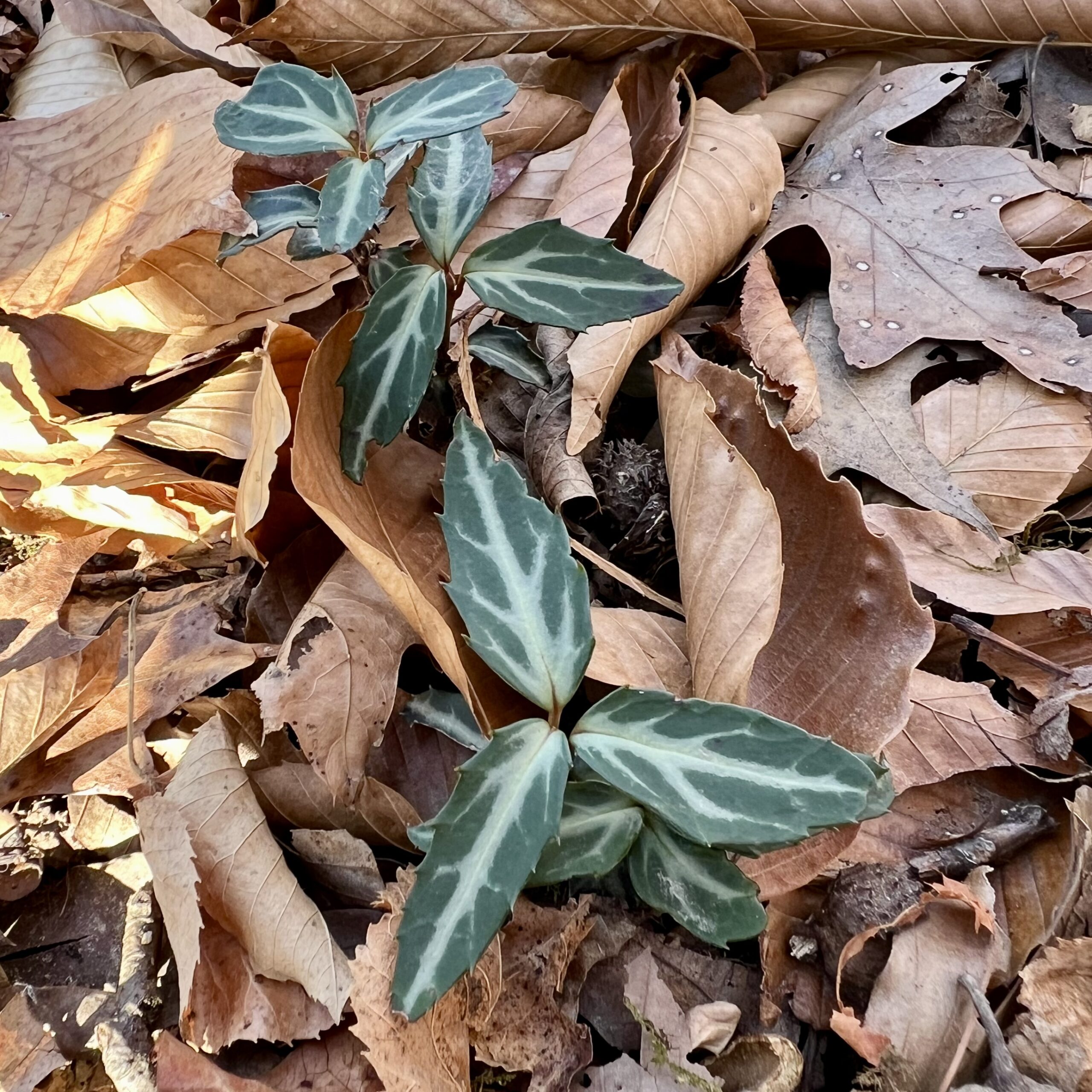
Striped Wintergreen (Chimaphila maculata)
This native plant can be found under the large beech tree just past the pond. It sends up a shoot in the spring, with small, nodding white flowers blooming in June.
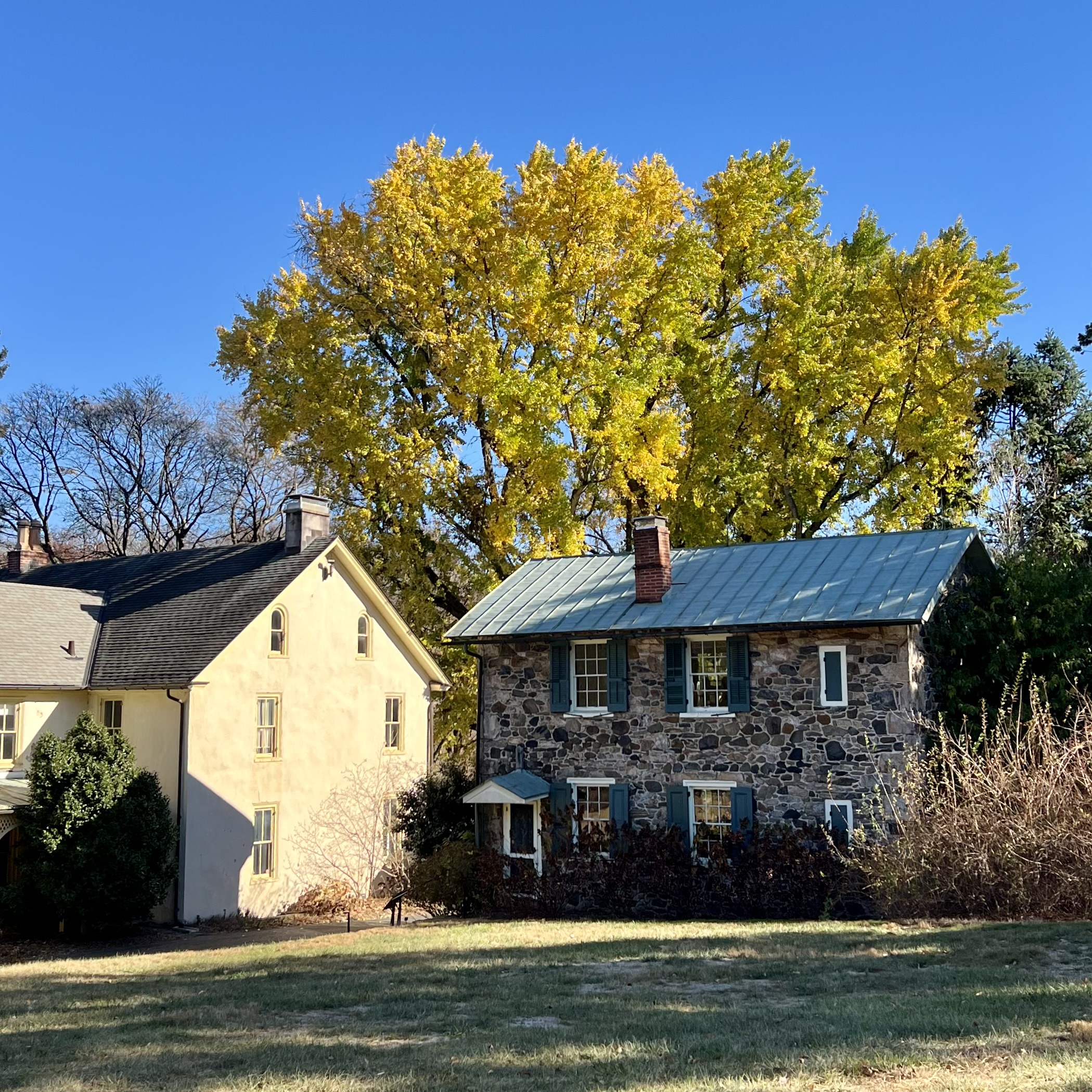
Ginkgo Tree behind Lachford Hall
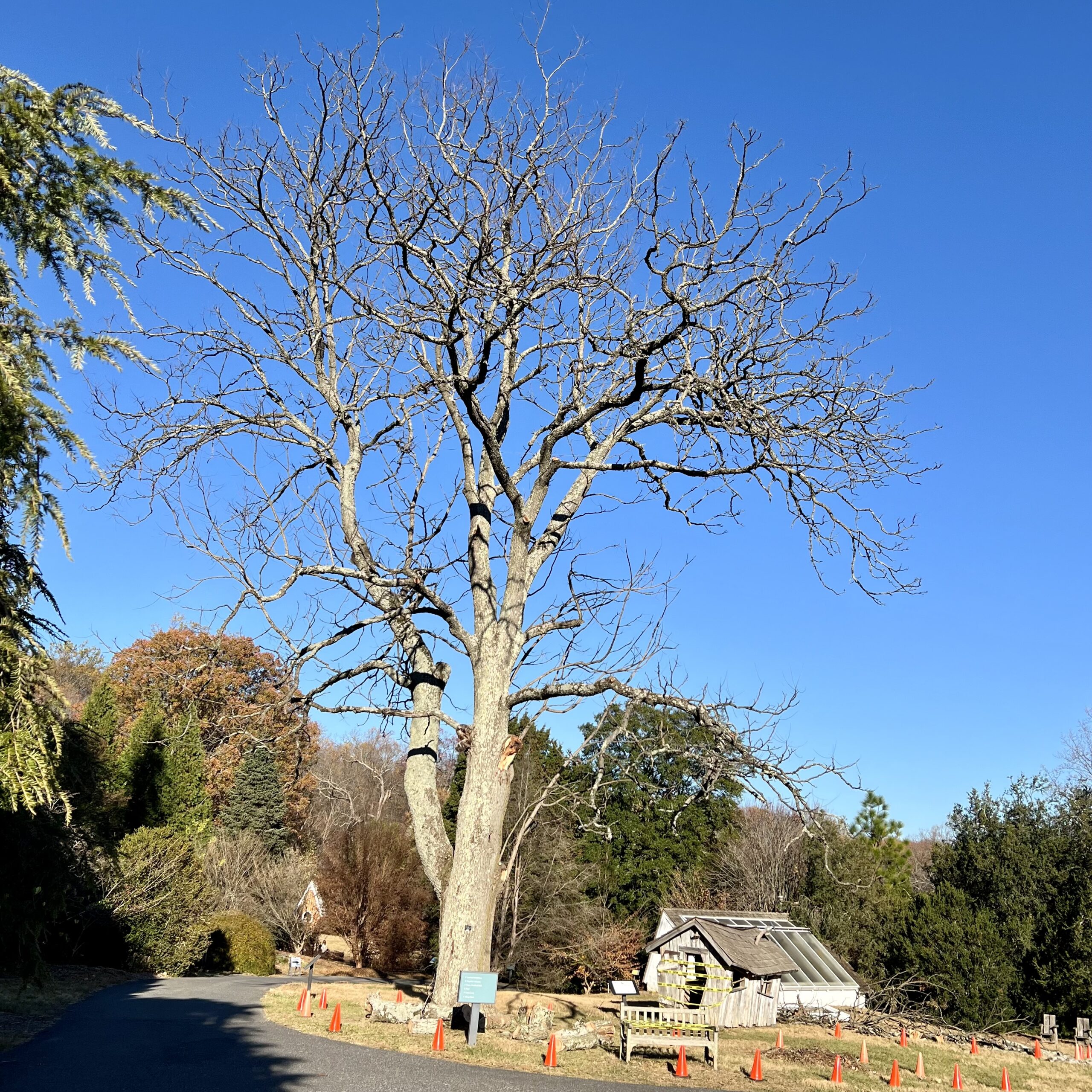
Kentucky Coffeetree
The Kentucky coffee tree near the Goblin Shack lost a large limb. Unfortunately, this was the limb at eye level that provided an excellent view of its flowers when they bloomed in May. Now, we will have to admire the flowers from a distance.
Report: Week of Nov. 26, 2024
I haven’t seen much fungi on the trails lately due to the drought, but the small amount of rain we received did bring out a few interesting specimens.
All three of the mushrooms pictured below are saprotrophic, meaning they feed on dead or decaying material—in this case, wood. Saprotrophs play a crucial role in breaking down organic matter, releasing nutrients that benefit themselves and other organisms. This process helps clear the way for new growth in the forest. Nature finds a way to recycle and renew, even during a drought.
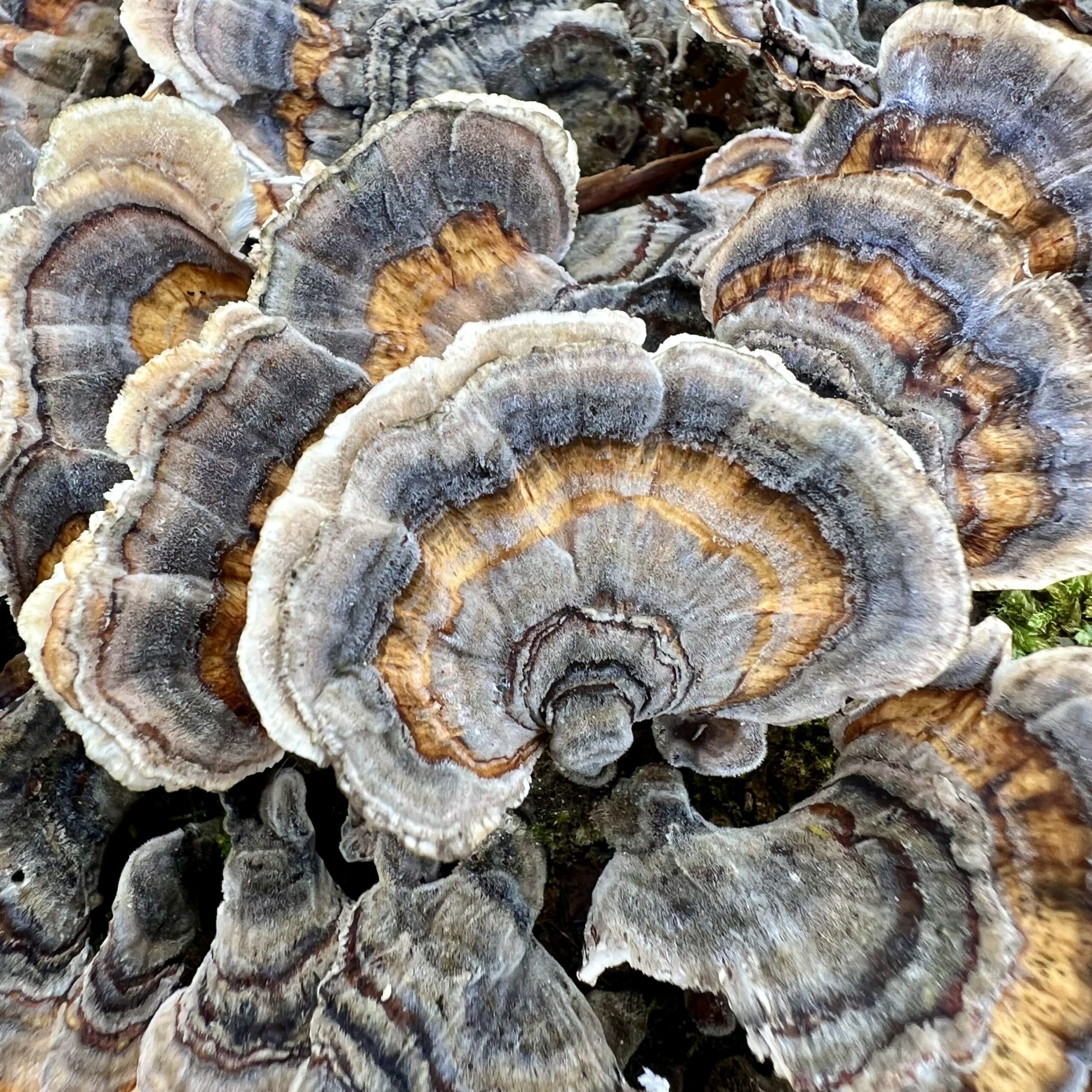
Turkey tail (Trametes versicolor)
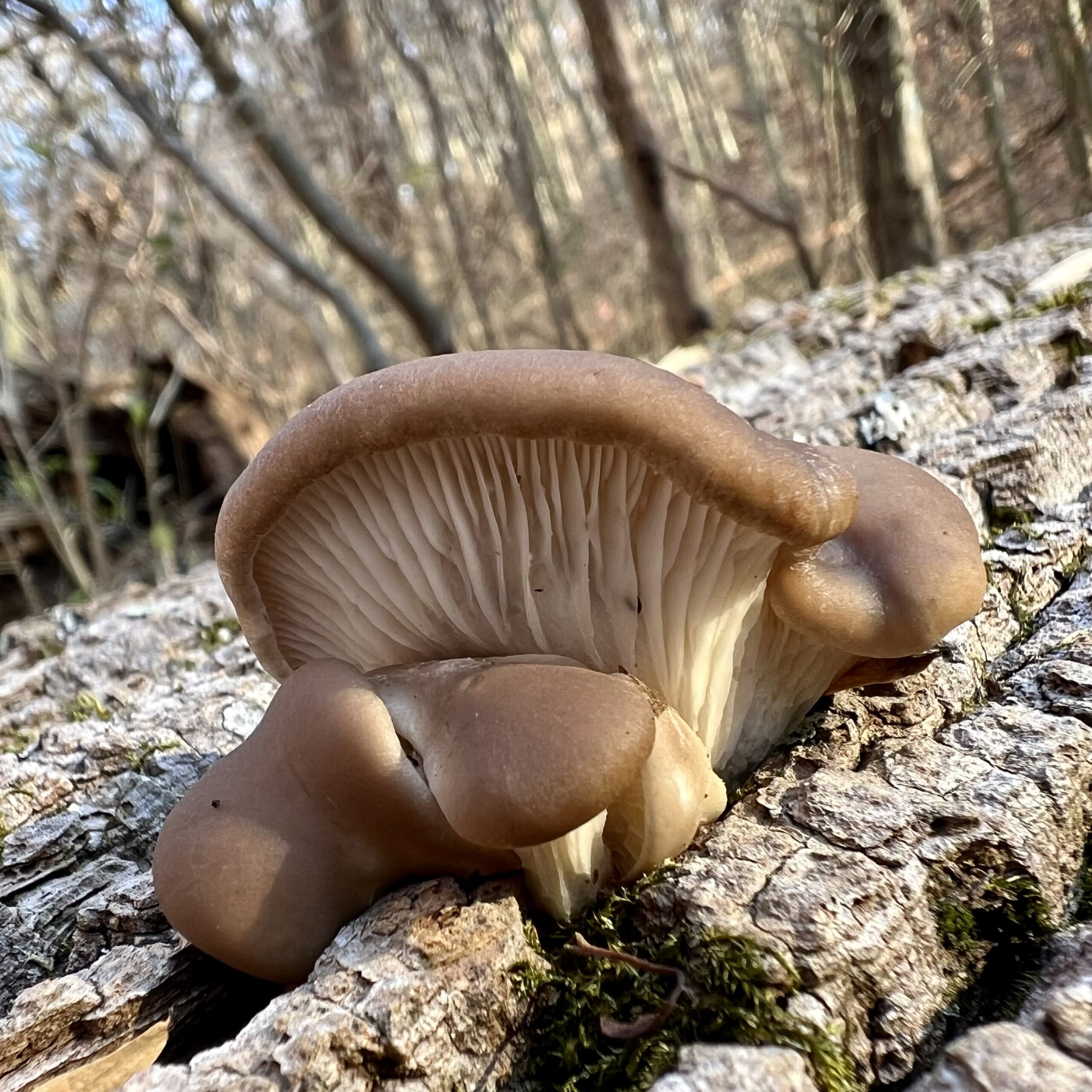
Oyster mushroom (Pleurotus spp.)
